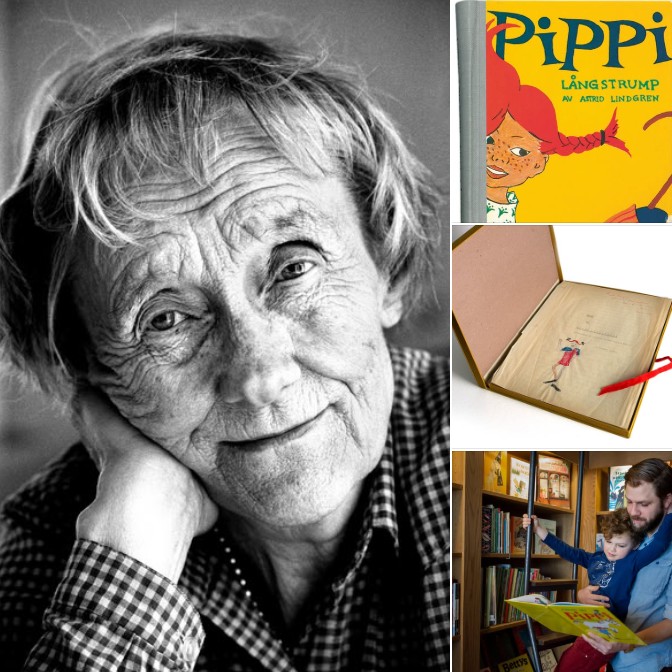Pippi Longstocking
Did you know that girl rebel Pippi Longstocking turns 80 in 2025? Happy birthday!
Astrid Lindgren's children character Pippi Longstocking is in truth an unusual young girl.
She is financially independent since she owns a sackful of gold pieces. She can shoot a revolver and sail on the seven seas. She is both cheeky and kind, she can carry a horse and she can outlift the strongest man in the world, Mighty Adolph.
Pippi Longstocking is a girl rebel, who has inspired children all over the globe since 1945. In her storybook world, she saves children from adult laws and provides them with unlimited amounts of fizzy drink. She stands up for the weak and oppressed. So it may not be strange that some dictatorships and conservative states have censored the anti-authoritarian Pippi, and that she has aroused the fury of many adults.
A Swedish social commentator once argued that the ‘Pippi cult’ had had a highly detrimental effect on both school children and pre-school children in Sweden. ‘Pippi-worship has turned everything upside down, in schools, in family life and in terms of normal behaviour,’ the commentator wrote in a leading Swedish daily.
Mocking established roles
Perhaps the critics and censors, being adults, took Pippi a little too seriously. Children know that Pippi is doing wrong when she drinks lemonade out of a jug at a garden party. Nevertheless, like other popular storybook characters, she has influenced the way they think and behave.
Pippi is fun because she breaks with conventional ideas about how girls should behave – and also, perhaps, makes fun of adults’ gender roles in the process. Like when she goes to the market in her giant, mill wheel-like hat, dressed in a full-length evening gown and with huge green rosettes on her shoes. She has also applied charcoal to her eyebrows and coated her mouth and nails with red paint.
‘I think you should look like a really fine lady when you go to the market,’ Pippi says.
There is a sign in a shop window in the small town where she lives that reads, ‘DO YOU SUFFER FROM FRECKLES?’ Pippi doesn’t. She is not interested in the anti-freckle cream on offer but nevertheless goes into the shop to make her position clear.
‘No, I don’t suffer from freckles’, she declares. ‘But my dear child’, the startled assistant says, ‘your whole face is covered in them.’ ‘I know’, says Pippi, ‘but I don’t suffer from them. I like them. Good morning!’
New demands on girls
It is hardly strange that Pippi eventually became something of a role model in the women’s movement. One result has been that in recent decades some adults have wanted to make girls as strong, brave, uninhibited, amusing, rebellious and defiant of authority as Pippi – at least those striving to bring up children in a spirit of gender equality.
Girls have begun to catch up with the boys, who have long been allowed to mess around and behave more rowdily.
Paradoxically, though, a liberating influence such as Pippi may also place tacit demands on girls – ones that may be difficult to live up to, at least for some. Take Annika, Pippi’s friend, for instance, who is always well-behaved and well-dressed, the very image of a model girl of the post-war period.
Nowadays, Swedes sometimes use Annika as a cautionary example – simply because she is neither brash, nor adventurous, nor particularly active. ‘Dreary Annika’, as the saying goes in Sweden. But surely not everyone can be as courageous, tough and entertaining as Pippi?
First and foremost a fun read
Astrid Lindgren (1907–2002) was not exactly proceeding from an explicit feminist agenda when she wrote her wonderful stories about this remarkable girl and her two close friends. That, however, has not prevented Pippi Longstocking from becoming a source of inspiration in the struggle for gender equality. To some, she is still the hero of the day.

